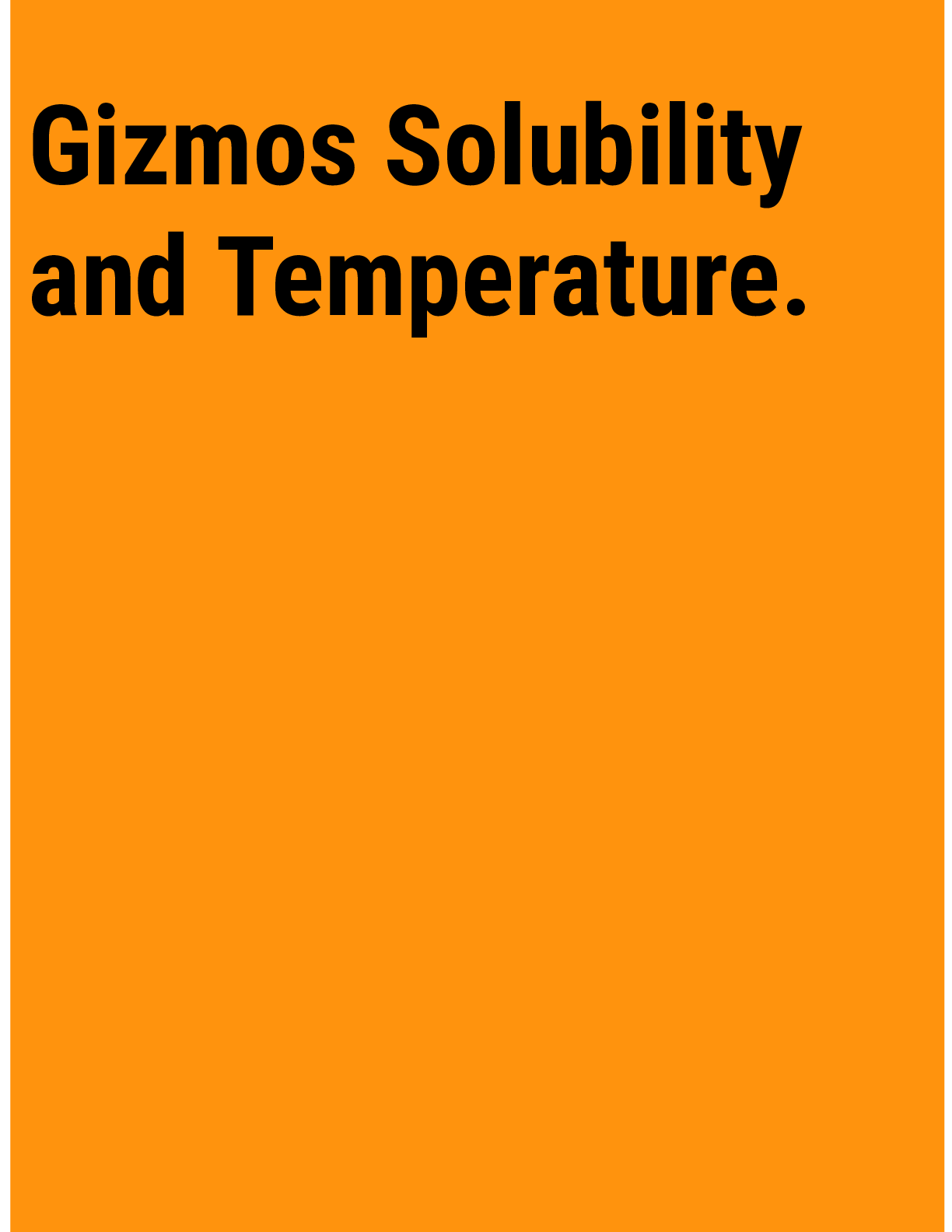SCIENCE 101 Gizmos_Solubility_and_Temperature (Student Exploration)
Document Content and Description Below
SCIENCE 101Gizmos_-_Solubility_and_Temperature.doc Name: Sam Hargadon Date: 10/4/18 Student Exploration: Solubility and Temperature Vocabulary: concentration, dissolve, homogeneous mixture, solubi... lity, solubility curve, solute, solution, solvent Prior Knowledge Questions (Do these BEFORE using the Gizmo.) 1. What happens when you stir a spoonful of sugar into hot water? The sugar will dissolve. 2. When sugar or another substance is dissolved in water, it disappears from view and forms a homogeneous mixture with the water, also called a solution. If you can’t see the sugar, how can you tell that it is there? The color of the water changes and it will taste different. 3. Does sugar dissolve more easily in hot water or cold water? Sugar dissolves more easily in hot water. Gizmo Warm-up A solution generally consists of two parts, a solute that is dissolved and a solvent that the solute is dissolved into. For example, sugar is a solute that is dissolved into the solvent water. In the Solubility and Temperature Gizmo™, you will study how temperature affects how much solute will dissolve in a solution. To begin, check that Potassium nitrate is selected and the Temp. of the water is 20 °C. Click OK. 1. In this solution, what is the solute? Potassium nitrate What is the solvent? Water 2. Click Add 10 g to mix 10 g of potassium nitrate into the water. A. Did all of the potassium nitrate dissolve? Yes B. How can you tell? You can’t see the potassium nitrate. Activity A: Solubility Get the Gizmo ready: Click Reset. Check that the Temp. is 20 °C and that Potassium nitrate is selected. Question: How do we find how much solute can be dissolved in a solvent? 1. Observe: Click OK. Click Add 20 g, and observe the potassium nitrate being mixed into the solution. On the right, select the BAR CHART tab and turn on Show numerical value. The bars show how much solute has been added and how much has piled up on the bottom. Did all of the solute dissolve? Yes 2. Calculate: The concentration of a solution is equal to the mass of solute divided by the volume of solvent. Units of concentration are grams per 100 milliliters (g/100 mL, or g/dL). What is the concentration of this solution? .2 g/mL 3. Experiment: Click Add 20 g again. A. Did all of the solute dissolve? Explain how you can tell. No, because you can see the potassium nitrate at the bottom of the beaker. B. Based on the amount of solute added and the amount piled up on the bottom, how many grams of solute dissolved in the water? 30.65 g C. The solubility of the solution is equal to the maximum concentration of the solute. What is the solubility of potassium nitrate in 20 °C water? 3.065 g/mL 4. Experiment: Click Reset, and select Sodium chloride. With the Temp. still set to 20 °C, click OK. Add sodium chloride to the beaker until it starts piling up at the bottom. A. How much sodium chloride did you add? 37 g B. How much sodium chloride piled up at the bottom? .34 g C. How much sodium chloride dissolved in the water? 36.66 D. What is the solubility of sodium chloride in 20 °C water? 3.67 g/mL 5. Apply: At 20 °C, how much sodium chloride could be dissolved into 2 L of water? 733.2 g How much potassium nitrate could be dissolved into the same amount of water? 613 g [Show More]
Last updated: 2 years ago
Preview 1 out of 4 pages

Buy this document to get the full access instantly
Instant Download Access after purchase
Buy NowInstant download
We Accept:

Reviews( 0 )
$9.00
Can't find what you want? Try our AI powered Search
Document information
Connected school, study & course
About the document
Uploaded On
Sep 07, 2021
Number of pages
4
Written in
Additional information
This document has been written for:
Uploaded
Sep 07, 2021
Downloads
0
Views
85




